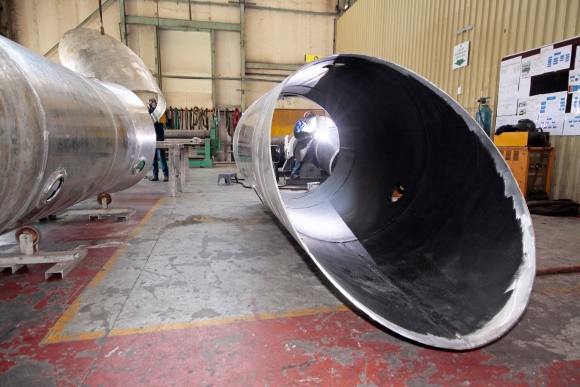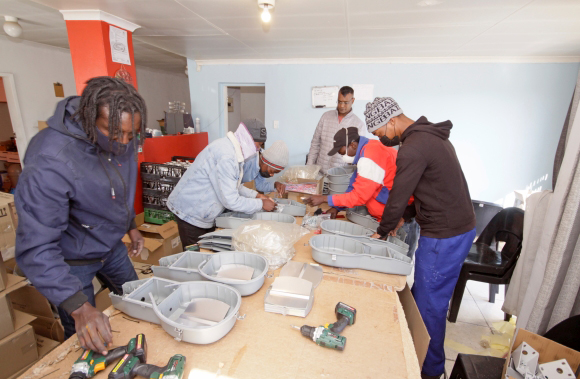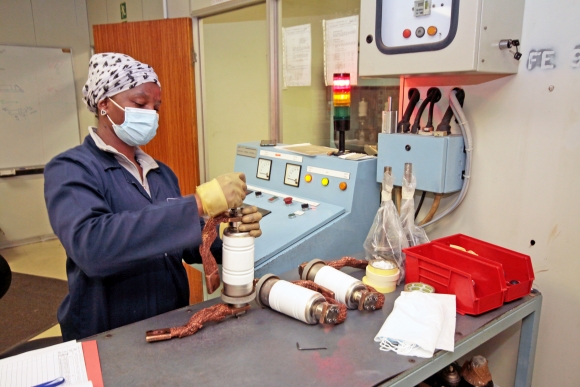The South African Government has long highlighted localisation and industrialisation as critical policy aims during the economy’s recovery from the COVID-19 crisis. It is such a hot topic that organised business in Nedlac has recently been requested to substitute 20% of non-petroleum goods imports for domestically produced goods as soon as possible.
So, why is localisation touted as the siren song of the South African economy?
In simple terms, since the Gross Domestic Product (GDP) is made up of the sum of consumption, investment, and exports less the cost of imports, anything that reduces imports raises GDP if nothing else changes. In this way, localisation promotes growth, industrialisation, and employment.
It is no secret that South Africa’s current economic trajectory is unsustainable: economic growth has stagnated, unemployment is rising, and inequality remains high. The government should urgently implement a series of reforms that can boost South Africa’s growth in the short term while also creating the conditions for higher long-term sustainable growth. These reforms should promote economic transformation, support labour-intensive growth, and create a globally competitive economy.
In practical terms, localisation implies local procurement by the government and the private sector alike. The overarching vision is not to localise everything but to localise where possible and sustainable.

Mervyn Naidoo, ACTOM CEO, feels passionate about localisation and designation, that all thirteen of ACTOM’s divisions are actively involved in localising their products. “What is important is that you need government spend to localise. Localisation has an impact on the whole supply chain. When you localise manufacturing, all the sub-components of manufacturing fall into place and benefit communities,” Mervyn said.
In many respects, South Africa appears to be at a tipping point. Record levels of unemployment, rising poverty levels, increasing political uncertainty and the large-scale diversion of resources away from inclusive growth to the beneficiaries of state capture have created an environment in which investors are understandably cautious and seek investment opportunities abroad. Suppose we continue our current low road, the prospect of an IMF intervention beckons, with the associated loss of sovereignty determining our economic future. Against this backdrop, we risk a toxic cocktail of continued further de-industrialisation and job losses. Job losses lead to an increased burden on the state in terms of basic income grants. It is important to note that approximately eighteen million people depend on basic income grants, which is just not sustainable.
“We have to take an inward look – look at ourselves and see how we can revitalise manufacturing in our country and employ local people to assist in manufacturing”, said Mervyn. “International companies working on projects in South Africa bring their own people to work on projects locally, resulting in job losses for the indigenous population. This has the potential to trigger xenophobic behaviour, as seen previously. Anger levels are rising nationally, given the magnitude of the unemployment crisis”, he added.
In recent years, the municipal entity market segment requirements for localisation compliance have taken shape under the Preferential Procurement Regulations of 2017. There are two central tenets in construction-related works typical to our environment: skills development and small businesses alike.
South Africa has the funding channels to support large industrial projects, such as banks and the development finance sector. Industrial financing support such as government schemes, development finance and tax incentives, and the country’s 13 special economic zones (SEZ) can reduce project risks and raise returns on investment.
In a society with extraordinary levels of unemployment and poverty, all efforts will need to be made to find commercially sustainable ways to create new jobs in the private sector, to complement what can be done through public employment opportunities. New job growth will be stimulated by the demand for the production of goods and services, which can come from a combination of expanded domestic demand and increased exports. To create jobs on a scale, we must pursue these drivers of new private-sector job growth.
John McClure, General Manager of ACTOM Power Systems, added, “at the outset of a new contract, we get in touch with the local ward councillor to collaborate and strategise on the embedded localisation potential within the contract’s scope of supply. With the councillor’s guidance, a Community Liaison Officer (CLO) serves as a conduit within the ward. A labour histogram is drafted to forecast the project’s human resources requirements, with the CLO performing an agency function to attain our fluctuating resource requirements. Additionally, we compile a list of subcontract opportunities circulated amongst local business forums to assist in identifying fledgling ventures for participation”.
Conscripts are appointed under the Expanded Public Works Programme (EPWP) initiative, primarily focused on providing poverty relief and skills development through temporary work for the unemployed.
On-the-job training is given on construction skills, including bricklaying, plastering, painting, concrete formwork, cable terminating and electrical wiring. At any given time, there is usually a team of eight to fifteen EPWP personnel working alongside a site crew at each substation, with wages set at the prescribed rate. Thus, while their engagement is only transitory, the skills transferred can improve their future employability prospects and possibly even inspire some to go into business themselves.
All such work is performed under the supervision and assistance of ACTOM’S in-house site management structure as we ultimately assume accountability for overall contract delivery irrespective of whom performed each task. Often special arrangements are required to facilitate such works in terms of procurement assistance or preferential payment terms.
With ACTOM’s John Thompson division, most construction, maintenance, repair and services projects for large SOE, government, quasi-government, and private organisations require that they complete one or more of the following with their project scope:
- Skills development of locals
- Enterprise Development of local small black-owned businesses
- Supplier Development of local small black-owned businesses
- Corporate Social Investment in local communities
- Subcontracting to local black-owned Emerging Micro Enterprises (EME) and Qualifying Small Enterprises (QSE) businesses
“The localisation obligations are intended to benefit local communities which generally have high unemployment rates, widespread poverty, low education qualifications and which communities are rural or peri-urban in nature”, said Shardanand Seeth, Business Development Executive of the John Thompson Division.

“All SOE and large corporate clients impose these requirements on us as contractual obligations – and our performance is measured against these commitments. Non-compliance generally carries a financial penalty for the business”, he added.
Genlux Lighting, an ACTOM Business Unit, uses a programme whereby sub-assembly and supply are done through two local SMME companies under Enterprise development and Supplier development. “This is hugely beneficial to both Genlux Lighting and the SMME companies”, said Sello Tsoai, General Manager, Genlux.
The SMME companies are set up with all required equipment, tooling, and systems relevant to Genlux Lighting’s production requirements according to their specification.
As a manufacturer of traditional electric elements and thermostats for domestic use, Satchwell came under severe price pressure in the early 2000s due to imports from the Far East. Many of Satchwell’s Original Equipment Manufacturers (OEM) customers could not sustain their businesses due to the imported completed product (small household appliances). Certain large household appliance manufacturers (kitchen stoves and domestic hot water cylinder manufacturers) were bought over by overseas enterprises with their own supply chains.
Localisation is a word that appears in each of the economic recovery strategies published by the Presidency, Nedlac, numerous political parties and Business SA. “Localisation will benefit Satchwell extensively by creating employment opportunities for its support industries, supplying a vast array of raw material and componentry to the organisation. For Satchwell, as for many other businesses, it can only be a good thing”, said Arno Muller, General Manager, Satchwell.
According to Casbah Zwane, CEO of ACTOM High Voltage Equipment, “I want to see us manufacture better and efficiently and have advanced our products, bringing it into the 4th Industrial Revolution arena. Industry 4.0 enables continuous resource productivity and efficiency gains to be delivered across the entire value network.”
The Fourth Industrial Revolution is more than just technology-driven change; it is an opportunity to help everyone, including leaders, policymakers and people from all income groups and nations, harness converging technologies to create an inclusive, human-centred future. “If companies can just buy local and refrain from importing, South Africa might have a chance”, he concluded.

Government must adopt the appropriate structures and controls. The private business sector must locally source, manufacture, produce, and encourage skills development, whilst the public must buy locally produced products and services. It is crucial that businesses actively enhance and optimise production processes to ensure that manufactured products are as cost competitive as can be, relative to imports. It is also important to understand that developed economies have actively leveraged on their local infrastructure spend to enhance GDP growth, which is something South Africa needs to emulate. South Africa needs to urgently increase the number of economically active people in our society, which will bolster GDP growth. Growing the manufacturing sector and industrialisation has the ability to deliver this. The responsibility to drive the South African economy lies squarely on our shoulders.

